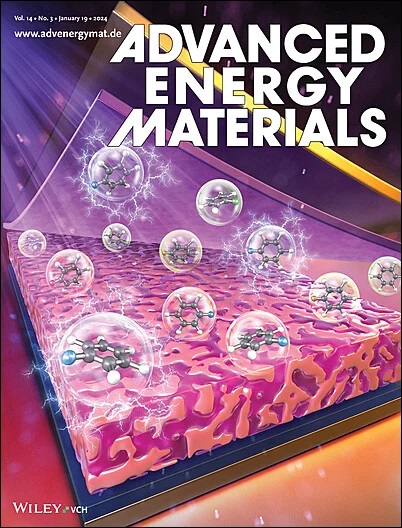Voltage Noise Failure Induced by Li Dendritic Micro-Penetration in All-Solid-State Li-Metal Battery with Composite Solid Electrolyte
IF 24.4
1区 材料科学
Q1 CHEMISTRY, PHYSICAL
引用次数: 0
Abstract
All-solid-state Li-metal batteries (ASSLBs) are the most attractive next-generation batteries due to intrinsic safety and high energy density. Particularly, composite solid electrolyte (CSE)-based ASSLBs, highly compatible with conventional Li-ion batteries, are nearing commercialization. However, the understanding of ASSLBs’ failure remains deficient, thereby considerably hindering their advancement. Herein, the unrecognized failing mode of ASSLBs, voltage noise failure (VNF), characterized by irregular charging voltage configuration, is identified using comprehensive techniques, including laser-induced breakdown spectroscopy. The VNF originates from micro-penetration of Li dendrites, which is demonstrated through direct observation of 3D Li concentration map in CSE. In this phenomenon, the transition metals, dissolved from the cathode, hop to the anode and serve as seeds for dendritic growth in VNF. Inspired by this mechanism and with the aid of DFT calculations, a transition metal scavenging layer is proposed using Prussian blue analogue at the cathode-CSE interface. Consequently, ASSLBs with transition metal scavenging layer exhibit superior capacity (189 mAh g−1 at 0.5 C, NCM811) and stable cyclability (1200 cycles without failure).

求助全文
约1分钟内获得全文
求助全文
来源期刊

Advanced Energy Materials
CHEMISTRY, PHYSICAL-ENERGY & FUELS
CiteScore
41.90
自引率
4.00%
发文量
889
审稿时长
1.4 months
期刊介绍:
Established in 2011, Advanced Energy Materials is an international, interdisciplinary, English-language journal that focuses on materials used in energy harvesting, conversion, and storage. It is regarded as a top-quality journal alongside Advanced Materials, Advanced Functional Materials, and Small.
With a 2022 Impact Factor of 27.8, Advanced Energy Materials is considered a prime source for the best energy-related research. The journal covers a wide range of topics in energy-related research, including organic and inorganic photovoltaics, batteries and supercapacitors, fuel cells, hydrogen generation and storage, thermoelectrics, water splitting and photocatalysis, solar fuels and thermosolar power, magnetocalorics, and piezoelectronics.
The readership of Advanced Energy Materials includes materials scientists, chemists, physicists, and engineers in both academia and industry. The journal is indexed in various databases and collections, such as Advanced Technologies & Aerospace Database, FIZ Karlsruhe, INSPEC (IET), Science Citation Index Expanded, Technology Collection, and Web of Science, among others.
 求助内容:
求助内容: 应助结果提醒方式:
应助结果提醒方式:


